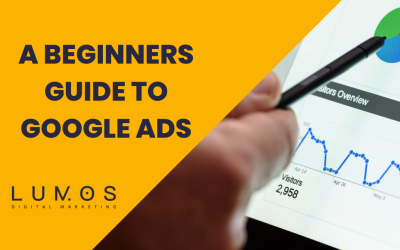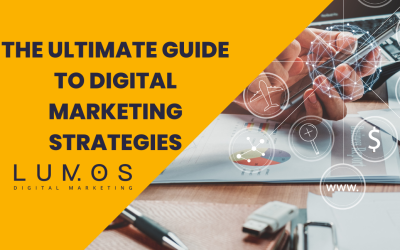Content marketing has become an indispensable strategy within the marketing sphere. Content helps you to build an online presence, engage your target audience, and drive meaningful results. However, implementing a successful content marketing campaign requires careful planning and execution. In this guide, we will take you through the essential steps of content marketing, helping you to develop a strong foundation and achieve your marketing objectives.
First Things First: What Is Content Marketing?
Content marketing is a strategic marketing approach that involves creating and distributing valuable, relevant, and consistent content to attract and engage a target audience. It is centred around providing valuable information, entertaining stories, or educational material that is designed to address the needs and interests of the audience, rather than directly promoting a product or service.
The Different Types Of Content Marketing
Content marketing has a wide range of formats. Here are just some of the different types of content marketing:
Blog Posts and Articles
This is written content in the form of blog posts or articles and is a common type of email marketing, it allows businesses to provide in-depth information, insights, how-to guides, and thought leadership news.
Videos
Video content has gained significant popularity in recent years. Video can take various forms such as product demonstrations, tutorials, webinars, interviews, or brand storytelling. Video content is highly engaging and shareable. It is an effective tool for converting messages and building connections with the audience.
Podcasts
Podcasts are audio-based content that allows businesses to engage with their audience through discussions, interviews, storytelling, or educational episodes. Podcasts are convenient for users to consume while commuting, exercising, or multitasking. They have become a popular form of content marketing in recent years.
User Generated Content (UGC)
UGC involves content created by the audience or consumers, such as testimonials, reviews, social media mentions, or customer stories. It helps build social proof, fosters engagement and encourages brand advocacy.
There are of course plenty more forms of content marketing. These are just a few examples.
Why Have A Content Marketing Strategy?
Having a content marketing strategy is essential for many reasons:
Building Brand Awareness
A well-executed content marketing strategy helps to increase brand visibility and awareness. By consistently producing valuable and relevant content, you can establish your brand as an authority in your industry and capture the attention of your target audience.
Attracting and Engaging The Target Audience
A content marketing strategy allows you to tailor your content to the specific needs and interests of your target audience. By creating content that resonates with them, you can attract their attention and engage them in meaningful ways. This can lead to increased website traffic, longer engagement durations, and higher conversion rates.
Supporting The Buyer’s Journey
Content marketing plays a crucial role in guiding potential customers through the buyer’s journey. By creating content that addresses different stages of the customer’s decision-making process, from awareness to consideration and ultimately to purchase, you can nurture leads and move them closer to becoming loyal customers.
Supporting Other Marketing Initiatives
Content marketing complements and supports other marketing initiatives such as social media marketing, email marketing, and digital advertising. By creating valuable content, you provide assets to share on social media platforms, including in email newsletters, or use as landing page resources for paid campaigns.
These are just a few examples of why you should have a content marketing strategy for your business.
Content Marketing Strategy
Define Your Objectives
You will want to begin by defining your marketing goals and what you want to achieve. For example, your goals may be increasing brand awareness, driving website traffic, generating leads, or nurturing customer relationships.
Understand Your Target Audience
To create content that resonates with your target audience, it is crucial to understand their needs, preferences, and pain points. Develop detailed buyer personas by conducting research, analysing customer data, and engaging with your target audience. These personas will serve as the foundation for your content strategy, helping you tailor your content to meet their specific needs.
Conduct Content Research
Thorough research is essential to identify content ideas, validate their relevance, and gain insights into your competitors’ strategies. Utilise keyword research tools, monitor industry trends and analyse competitor content to identify gaps and opportunities. This research will provide a solid foundation for generating valuable and engaging content.
Create A Content Plan
Develop a content plan that aligns with your objectives, audience, and available resources. Outline your content themes, formats (e.g. blog posts, videos, infographics), and publication schedule. Consider using a content calendar to organise your plan, ensuring a consistent flow and allowing for timely adjustments when needed.
Content Creation and Optimisation
With your plan in place, it is time to create high-quality content. Pay attention to the following key aspects:
- Compelling Headlines- Create attention-grabbing headlines that spark curiosity and encourage click-throughs.
- Engaging Introductions- Hook your readers from the start with captivating introductions that clearly communicate the value of your content.
- Valuable and Relevant Content- Provide information, actionable, and well-researched content that addresses your audience’s pain points and offers solutions.
- Visual Appeal- Incorporate relevant visuals, such as images, videos, or infographics to enhance the overall appeal and readability of your content.
- Search Engine Optimisation (SEO)- Optimise your content for search engines by incorporating relevant keywords, meta tags, and ensuring proper formatting for readability.
Content Promotion and Distribution
Creating great content is only half the battle. Promote your content through various channels to increase its reach and engagement. Leverage social media platforms, email marketing, influencer collaborations, and guest posting to amplify your content’s visibility. Engage with your audience, respond to comments, and encourage sharing to foster a sense of community around your content.
Monitor, Analyse, and Iterate
Regularly track and analyse the performance of your content using relevant analytics tools. Measure key metrics such as engagement rates, conversions, and social media reach. Use these insights to refine your content strategy, identify what works best for your audience, and make data-driven improvements.
Content marketing is a powerful tool for establishing a strong online presence and engaging your target audience. By following this guide, you will be equipped to develop a comprehensive content marketing strategy that aligns with your goals, connects with your audience, and drives meaningful results. Remember that consistency, quality, and relevance are key to building a successful content marketing campaign. If you are interested in reading more blog posts about content marketing, digital marketing, SEO, and more, then please visit the Lumos website.




0 Comments